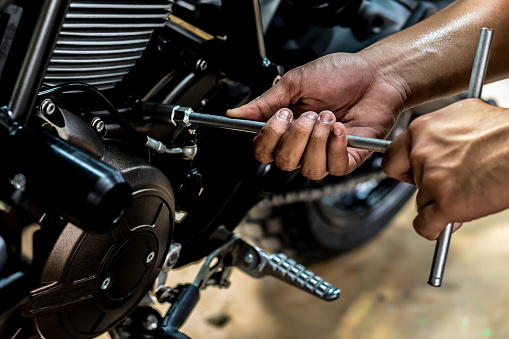
What you need to know about Motorcycle Traction?
"Tract it properly!"
The traction control system usually stops the motorcycle from sliding. By regulating the energy provided to the rear wheel, it does this. Thus, it simply controls the rear wheel's rotational speed. This decreases the chances of drifting significantly.
Motorcycles have two categories of traction control. Reactive is the first category, while predictive is the second category. The name of the categories shows their activity itself. Various components of the mechanism wait before the rotation of the wheel happens in the reactive form of motorcycle traction control and then make corrections.
The ECU and different sensors read the information in real-time and make adjustments before the wheel turns in the predictive form of motorcycle traction control. The machine constantly judges the chance. It also works efficiently to keep the motorcycle from drifting.

Importance of Traction:
It is also possible to describe traction or tractive force as the overall tractive force that occurs on the surface and is parallel to the motion direction. In simple terms, it is the force that is responsible for your bike's movement on the lane. If there was no traction, so at one specific moment, the bike would end up doing wheelspins without going anywhere.
Tyres' Position in Traction:

As you know, with any vehicle on the lane, tyres play the most important role in rolling. Tyres that have a decent road surface patch provide good traction due to the greater contact area. In comparison, tires come with definite patterns known as treads on the outer diameter. These treads help get rid of the water and sand that appears to go into the middle of the tyre. Deep treaded tires lock the loose substance in the event of mud or snow, instead of letting it roll out with the tyre.
Need For Traction Control:
We know that tires are the means of communication between the asphalt and the bike, which makes it easier for the machine to roll down the road. Bikes come with a comparatively angled surface tyre, the basic explanation of why bikes are able to corner when cars are not, opposed to cars that have a wide surface area of touch required on the tyres. Therefore, in order to have appropriate traction at curves, bike tyres are produced in such away. So, as we recall, bikes have a smaller, really very smaller contact area usable for road tyres. The rear wheel ends up spinning in the case of superbikes that have tremendous power transmission in the event of aggressive accelerations.
Also Read:
TOP 125CC BIKES SPECIFICATIONS WITH PRICE IN NEPAL
MAHINDRA XUV 300 PRICE IN NEPAL | FULL SPECIFICATION
FORD ENDEAVOUR BS6 LAUNCHED- PRICE, FULL SPECIFICATION | REVIEWS NEPAL
HOW TO GET FACEBOOK’S NEW REDESIGNED WEBSITE WITH DARK MODE
IS UPCOMING CITROEN C5 AIRCROSS FOR YOU?
HOLLYWOOD’S MOVIE TARGET NUMBER ONE NOW ON DISHHOME CINEMAGHAR INTERNATIONAL









